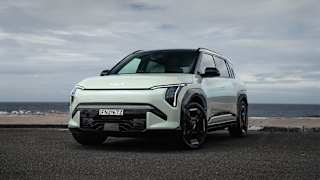The choice of such models will steadily increase over the next 18 months as the effects of stringent new emissions laws and environmental initiatives spur a spate of new arrivals from Europe and Asia. Nissan's Micra will be joined in the next few months by the newest Smart Fortwo and Fiat's already iconic 500.
They are likely to be meet competition later in 2008 or in early 2009 in the form of Suzuki's sub-Swift-sized Splash and possibly the Peugeot 107, which is identical under the skin to Toyota's Aygo.
As for Kia's Picanto, which in Europe has been compared favourably to mainstays such as Fiat's Panda, the Korean manufacturer will consider importing if a business case can be made.
The good news, for both carbuyers and for environmentalists, is that these new models combine in varying degrees practicality and economy. And even a degree of luxury.
All weigh less than a tonne, are not much more than 3.5m in length and can stay well below 10 litres per 100km in urban conditions for which they were received.
In Sydney, Smart cars, when they're seen at all, are usually towing advertising hoardings. Visit any major western European city — in particular Italy — and you'll see not only the Smart, but a range of tiny commuter mobiles that are cheap, affordable and emission light.
In the traffic maelstrom of Rome, where a Golf-size parking space is rarer than a slow Italian driver, light cars are almost the only vehicles that make sense. Indeed, production at the factory making the new Fiat 500 has been doubled to meet demand for the acclaimed compact.
And as our traffic conditions deteriorate, the local allocation of 500s might not meet demand. Light cars have evolved rapidly recently, says Edward Rowe of Ateco Autmotive, which imports the Fiat and the slightly bigger Citroen C2.
“You now have a car that people want to own, one with badge appeal, in addition to needing to own,” he says.
“That's the very clever blend of the 500. It's got the visual appeal and cuteness but real substance with that. A five-star NCAP crash rating is better than any Australian-made full-size car.”
While buyers are already less interested in big family cars, pressures beyond the marketplace are paving the road for light cars.
Having wasted no time in signing the Kyoto Protocol, the Federal Government has promised to set up a $500 million fund to attract investment for Australia to produce environmentally-friendly cars. To be introduced from 2011, the Green Car Innovation Fund aims to generate $2billion worth of investment to manufacture low-emission vehicles in Australia, the automotive industry being asked to match a $500 million government contribution on a one-to-three basis.
And last week, President George Bush signed a bill raising fuel efficiency standards for the first time since 1975 in a bid to cut US reliance on oil. The bill requires the automotive industry to reduce fuel consumption in most cars and light trucks by 40per cent, raising the fuel efficiency standard to 15km per litre by 2020.
Rowe says to expect a “flock of 1.4-litre” engines, petrol and diesel, such as the twin-charged unit in Volkswagen's Golf GT Sport.
“Engine size has become irrelevant,” Rowe says, “look at the power.”
Their hands were forced by the Euro 5-emission standard and prestige marques are also embracing the “less is more” aspect with cars that, if not as diminutive as the Fiat, are considerably smaller than any yet seen from Alfa Romeo and Audi.
The three-door Alfa Junior sporty supermini will reach us in 2009. Designed by Centro Stile Alfa Romeo, the design is inspired by the 8C Competizione. The Junior will feature a 110kW turbocharged petrol engine.
“People are under the impression that this is a new Alfasud,” Rowe says. “It's a size under that, closer to the VW Polo.”
Audi's A1, seen in concept form at the Toyko Motor Show, is “definitely” on Audi Australia's wish list, spokeswoman Anna Burgdorf says.
One motorist already enjoying the value of a light car is Peggy Polias. She bought a Smart Fortwo a year ago.
“I just thought they were really cute and fun and I don't want to spend too much on petrol,” she says. “I like how tiny it is and it's just really fun, it's nippy and really handy for urban driving.”
Averaging about 500km on a tank, the 26-year-old only has to visit a petrol station once every three weeks and spends about $40 to refuel.
Polias acknowledges she could have bought a car with a lot more space and seats for the $22,700 price tag she paid.
And while she looked at other cars, such as the Honda Jazz and Toyota Corolla, she decided the extra space wasn't something she really needed.
“I don't drive with other people much and the savings I get with petrol seem to outweigh it, especially if I stick to the car for a while.”













Comments